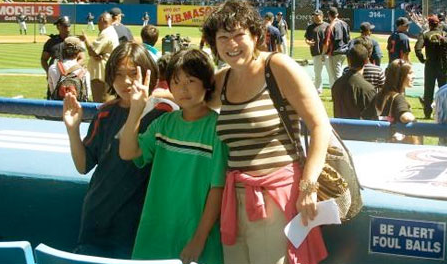Inconsistent Pleadings: Another Thing White People Like: Judging
by Ian Retford

The San Francisco Chronicle recently reported that Vaughn Walker, the James Coburn/Wilford Brimley look-alike who is overseeing the federal court challenge to California’s Proposition 8, is gay. (Awkward!) Since the story broke, journalists and pajama-bloggers have debated whether it’s appropriate for a gay man to adjudicate the constitutionality of a law aimed specifically at depriving gays of their rights.
This is an interesting question, if ultimately an academic one. As Vaughn himself has noted, the Prop 8 case will make a relatively brief stop in his courtroom before moving on to the Court of Appeals and possibly the Supreme Court, where the lawfulness of the referendum will ultimately be decided.
The real news in the Chronicle story was the sheer improbability that a gay rights case would get assigned to a gay judge. Out of more than 1,000 federal judges in the country, there are only two that are known to be gay: Vaughn, and a federal trial court judge in Manhattan, Deborah Batts. Using the most conservative estimates of their share of the population (not to mention their share of the legal population!), gays are underrepresented on the federal bench by, at least, the dozens.
Gays are not alone. The only demographic group that is overrepresented on the federal bench is white men, who, while constituting around 37% of the population, make up around 70% of federal judges. Contrast this with the percentage of federal judges who are women (17%), African-American (8%), or Hispanic (5%). As of 2009, there were 8 Asian-American federal judges. Eight, total. (These numbers are courtesy of a report [PDF] from the Brookings Institution.)
Enter Obama. As President, he has authority to appoint judges to all three levels of the federal judicial system: (1) trial courts, or District Courts, where federal cases are initially filed; (2) Courts of Appeals, also called Circuit Courts, to which decisions of the District Courts are appealed; and (3) the Supreme Court, which hears appeals from the Courts of Appeals.
Thus far, Obama has nominated 43 people to the federal bench, including Sonia Sotomayor. Although it should shock no one that the nominees are a diverse bunch, the specific statistics are nonetheless dramatic: 50% women; 26% African-American; 7% Hispanic; 14% Asian; and only 30% white male. Whites overall, who make up 85% of the current crop of federal judges, are only 53% of Obama’s nominees.
The diversity of Obama’s nominees stands in stark contrast not only to the current makeup of the federal bench but, more surprisingly, the nominees of past Democratic presidents. More than 60% of Jimmy Carter’s judicial appointments were white men, and Bill Clinton, whose desire for non-white/non-male appointments turned occasionally desperate, tapped the white guy more than 50% of the time.
So Obama appears to have a commitment to increasing the diversity of the federal bench, although it’s not something he seems particularly eager to talk about. (No public promises, a la Clinton, for a bench that “looks like America.”) Nor is it something that’s gotten a lot of press. But Obama’s nominations, though low-profile, are likely to be high-impact. Lower federal court judges, like Supreme Court justices, serve until death or retirement, whichever comes first. (The oldest federal court judge, appointed by JFK, is 102 years old.) Thus, the people nominated by Obama could (if confirmed by the Senate) rule on, for example, the scope of Constitutional protections for the next several decades.
The importance of lower federal courts is underappreciated. The Supreme Court gets more attention, but most of the action in the federal court system happens in the District Courts and the Courts of Appeals. The Supreme Court has near-complete discretion over its docket, and in recent decades has chosen to hear fewer than 100 cases per year. (For comparison: in 2009, more than 11,000 cases were filed in the District Court covering Manhattan.) For the vast majority of litigants, the ride through the federal court system stops well short of Justice Sonia and friends. The diversity of the Supreme Court Justices serves an important symbolic function, but diversity on the lower courts has a much greater chance of actually affecting your life.
Whether the race or gender of a judge actually influences the decision-making process is a topic of intense (and, typically, ill-informed) debate. Justice O’Connor has said many times that a wise old man and a wise old woman will usually reach the same result, and Justice Sotomayor has said… something different. (Studies seem to support Sotomayor, at least in part.)
This debate aside, there is a practical advantage to Obama’s picks: he’ll have a stable of well-qualified female and minority candidates to chose from if there is another Supreme Court vacancy during his term (which likely there will), and he may decide to fill the spot with someone who is non-white or non-male (which likely he will). Obama’s nominations might be grounded more in politics than in principle. But can we really argue with any efforts that help remake the federal judiciary in our image?
Ian Retford is the pseudonym of a lawyer in New York City.
